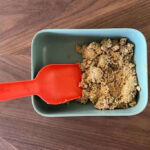Introducing solid food to kittens is a crucial step in their development. As they transition from their mother’s milk or formula, knowing when and how to introduce soft food is essential for their health and growth. This guide will walk you through the process of introducing soft food to your kitten, ensuring a smooth and successful weaning experience.
Typically, kittens begin to show interest in solid food around 3 to 4 weeks of age. This is the ideal time to start introducing soft, easily digestible kitten food. At this stage, their nutritional needs begin to exceed what milk alone can provide, and they are developmentally ready to explore new textures and tastes.
Introducing Soft Food Gradually
The key to successful weaning is to introduce soft food gradually. Start by offering a very small amount of wet kitten food. You can place a tiny bit on your finger, a spoon, or a shallow dish and gently offer it to your kitten. This allows them to explore the new food at their own pace and helps them get accustomed to eating from a dish.
Initially, kittens may be hesitant or clumsy when eating from a dish. Eating solid food is a new skill for them, and it may take a few days for them to get the hang of it. Be patient and encouraging. Let your kitten eat as much as they are interested in during each feeding session.
Feeding Frequency and Amounts
For kittens around 5 to 6 weeks old, offering soft food about 4 times a day is generally recommended. You can provide small, frequent meals to support their high energy levels and nutritional requirements during this rapid growth phase. Alongside soft food, you can also introduce dry kitten food, making it freely available for them to nibble on throughout the day. Always ensure fresh water is available in a shallow dish as well.
Monitoring Your Kitten’s Progress
It’s vital to closely monitor your kitten’s progress during the weaning process. Regularly weighing your kitten is crucial to ensure they are gaining weight appropriately. If you notice that your kitten’s weight is dropping or staying the same, it may indicate they are not eating enough soft food. In such cases, you might need to supplement with kitten formula using a bottle or explore different feeding methods to encourage them to eat.
Observe your kitten for signs of successful eating. Ensure they are actually swallowing the food and not just playing with it. Some kittens might exhibit “meat nursing,” where they mouth the food but don’t consume enough. Carefully observe their eating habits to confirm they are genuinely consuming sufficient food.
Water Introduction is Key
As you introduce soft food, it’s equally important to introduce fresh water. Provide water in a small, shallow dish that is easily accessible for your kitten. Ensure the water dish is not too deep, as kittens can be at risk around deep water sources. Change and refill the water dish daily to maintain hygiene and freshness. It’s normal for kittens to be a little unsure about drinking water initially, but they should be drinking confidently within a few days.
Transitioning to Solid Foods
Once your kitten is confidently eating soft food on their own, gaining weight steadily, and showing less interest in milk or formula, you can gradually reduce or eliminate supplemental feeding. This indicates they are ready to transition fully to solid foods. Make sure you are feeding a high-quality kitten food that is specifically formulated to meet their nutritional needs for growth and development. Continue to monitor their weight, behavior, and overall condition to ensure they are thriving on their new diet.
Patience is Paramount
The most important thing to remember during weaning is to be patient and avoid rushing the process. Weaning is a gradual transition that should be guided by the kitten’s own pace. Just as human babies need time to transition to solid foods, kittens also require time to adjust to eating soft food. Think of weaning as a process that may take anywhere from 3 to 10 days, or even longer for some kittens. During this time, closely observe your kitten, provide support and supplementation as needed, and ensure they are comfortable and healthy throughout the transition to solid food. You’ve got this, and your kitten will too!



